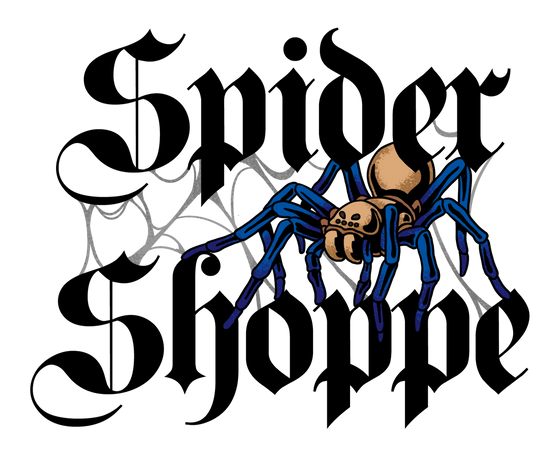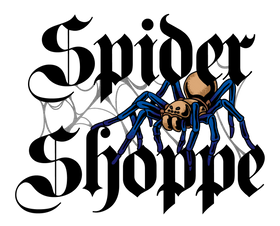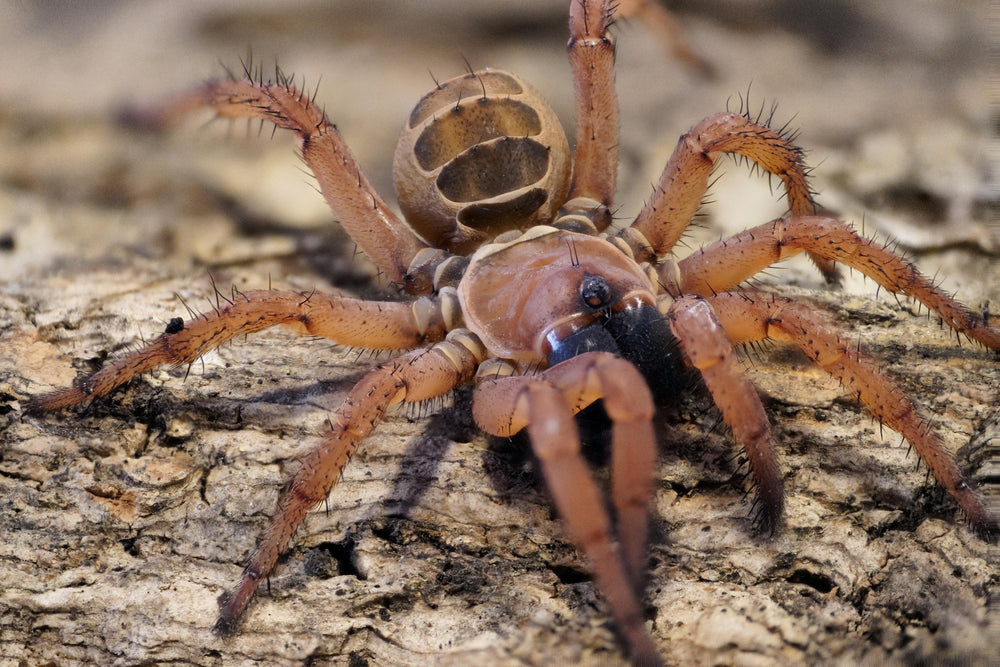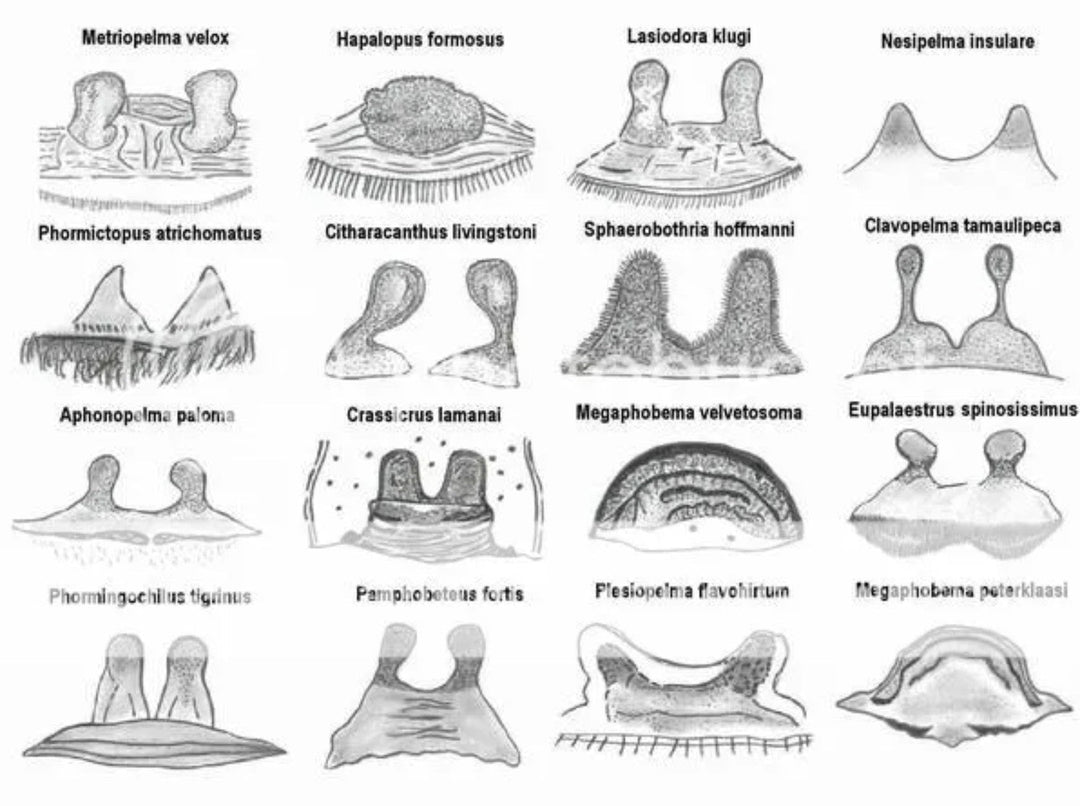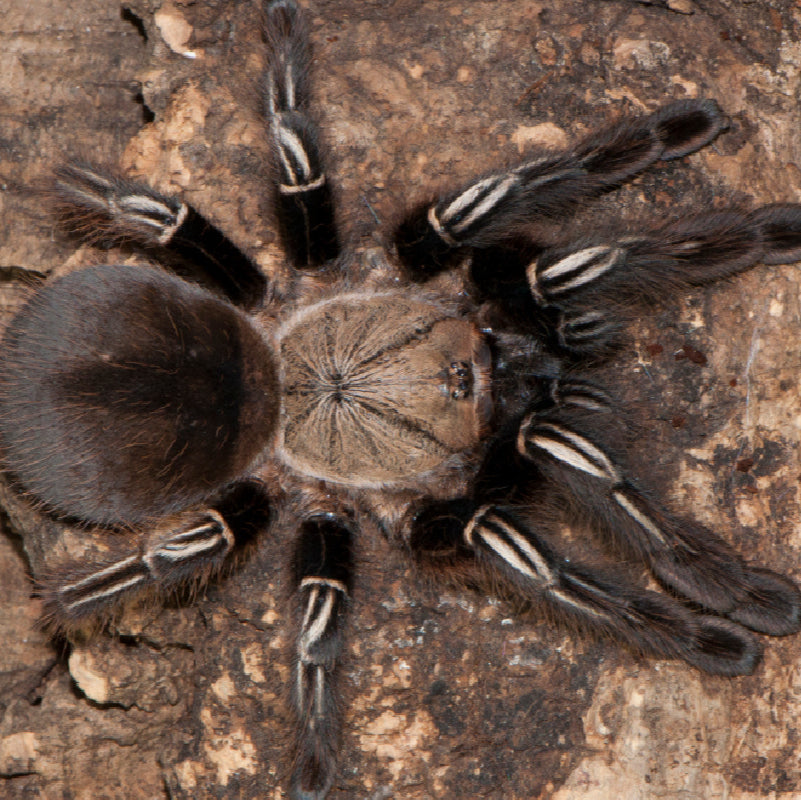Thrixopelma vs. Lasiodorides, morphological differences
Thrixopelma vs. Lasiodorides, morphological differences
Have you ever woken in a panic wondering what really distinguishes Thrixopelma and Lasiodorides? Know that you are not alone and that the Spider Shoppe team is here to help you sort this out. The confusion warranted when it comes to these Theraphosine genera. Turns out that these genera were both described using exuvia (molts) from captive tarantulas obtained from the pet trade in Europe, rather than actual specimens of the tarantulas! To make matters even worse, these tarantulas had no locality data, so we cannot verify where the type specimens were collected. For virtually any other animal lineage, describing a species based on exuvia [and with no locality data at that!] is totally unacceptable and unpublishable. But somehow, Thrixopelma and Lasiodorides slipped through cracks in the peer review process and were published.
Up until recently, the type material [specimens used to describe the species] for both of these genera were merely piles of disintegrating fragmentary exuvia sitting in natural history museum drawers. If you were an arachnologist wanting to verify whether your spider was truly a Thrixopelma or a Lasiodorides until recently, you literally had to piece together a puzzle of fragile, brittle exuvia chunks to compare with- and worse yet, most were of immature specimens, making it even harder to verify to the species level using internal anatomy of genitalia, which are best assessed in mature specimens.
Thankfully, a team of arachnologists (Sherwood et al. 2021) came to the rescue and took on the task of making sense of the wreckage that was Thrixopelma and Lasiodorides. They analyzed the type material to revise the genera and stabilized the taxonomy of each lineage and its species respectively. Below are summaries of the diagnoses of Sherwood et al. (2021) for each respective genus. Most of these characters mentioned require a microscope to observe.
Lasiodorides is unique amongst Theraphosinae genera in having a male palpal bulb with a very short and weakly curved embolus, an apical keel, prolateral superior keel, prolateral inferior keel, female spermathecae having two neck-constricted receptacles with apical rounded lobes, lack stridulatory setae on the coxae or trochanters of leg I and the palp; have type I urticating setae, and both sexes have a retrolateral pad of plumose setae on femora IV.
The genus Lasiodorides comprises two species that are native to Peru.
Thrixopelma is unique by its presence of an elongate prolateral inferior keel, the male palpal bulb having two distinct crests along its length, the female spermathecae comprising two separate hypersclerotized receptacles that are either ovoid or tubular with a rounded lobe at each apex, in combination with Type III- or both Type III and Type IV urticating setae.
The genus Thrixopelma comprises eight species that are primarily distributed in Peru, with three whose range extends into Ecuador.
References:
Sherwood et al. 2021. Stabilizing a chaotic taxonomy: redescription and redefinition of the genera Lasiodorides Schmidt & Bischoff, 1997 and Thrixopelma Schmidt, 1994 (Araneae: Theraphosidae). Arachnology, 18: 893–17.
